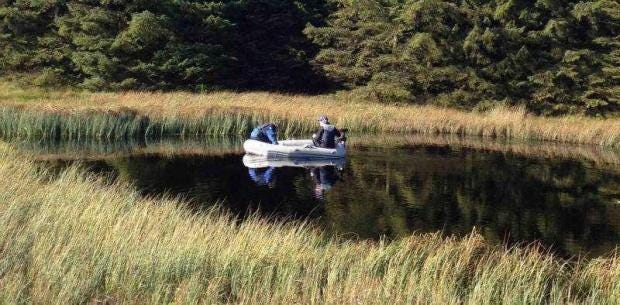How science is helping the police search for bodies in water
This kind of search is often challenging, as is the forensic recovery of a body. But by increasingly combining technology with traditional methods such as diving, we are getting better at it – greatly boosting our chances of discovering victims of homicide or accidental drowning. The techniques we use depends on the environment, ranging from ditches, canals and rivers to large lakes, estuaries and oceans.
I specialise in the first set of locations: bodies in small, enclosed spaces. These are common locations for bodies to end up in, due to their covert nature and ease of access without a boat.
Typically, the first step when searching for a missing person that is suspected to have ended up in water is to employ old-fashioned leads from police or search and rescue operations – such as points of access to the crime scene or the kind of distance the perpetrator and victim could have travelled. This may narrow down the search area.
Sonar, a technique that uses sound propagation to search for objects underwater, may then be used from a boat or held by a diver to image the pond or lake bed. If there’s a chance that the body could have sunk into soft sediment, a ground penetrating radar, which uses radar pulses to image the subsurface, could be placed at the base of a small boat to search for it.
If the sonar and/or radar detects an object, specially trained victim recovery dogs may be deployed from the boat to detect any scent rising from a decaying body.
In fact, we typically use a numbered system (one to four) of prioritising targets for dive teams to investigate. Four means high priority – with (theoretically) location, sonar, radar and dogs all indicating a possible sunken body. Three, two or one all mean that there are fewer indications than this. The end aim is to save dive teams from crawling along large areas of water conducting a fingertip search, or indeed draining the water body, with consequent environmental implications. The size and intensity of an anomaly on the radar data gives some clues as to what the target or contact may be, providing some important information for me to give the dive teams.
These techniques are extremely effective and apply to a large range of cases. For example, a few years ago we found a drowned victim in Fermanagh, Northern Ireland, using sonar, victim recovery dogs and penetrating radar. I am currently also assisting police with a number of searches for historic missing persons cases in some dams south of Belfast in Northern Ireland and in a canal in Scotland.





No comments:
Post a Comment